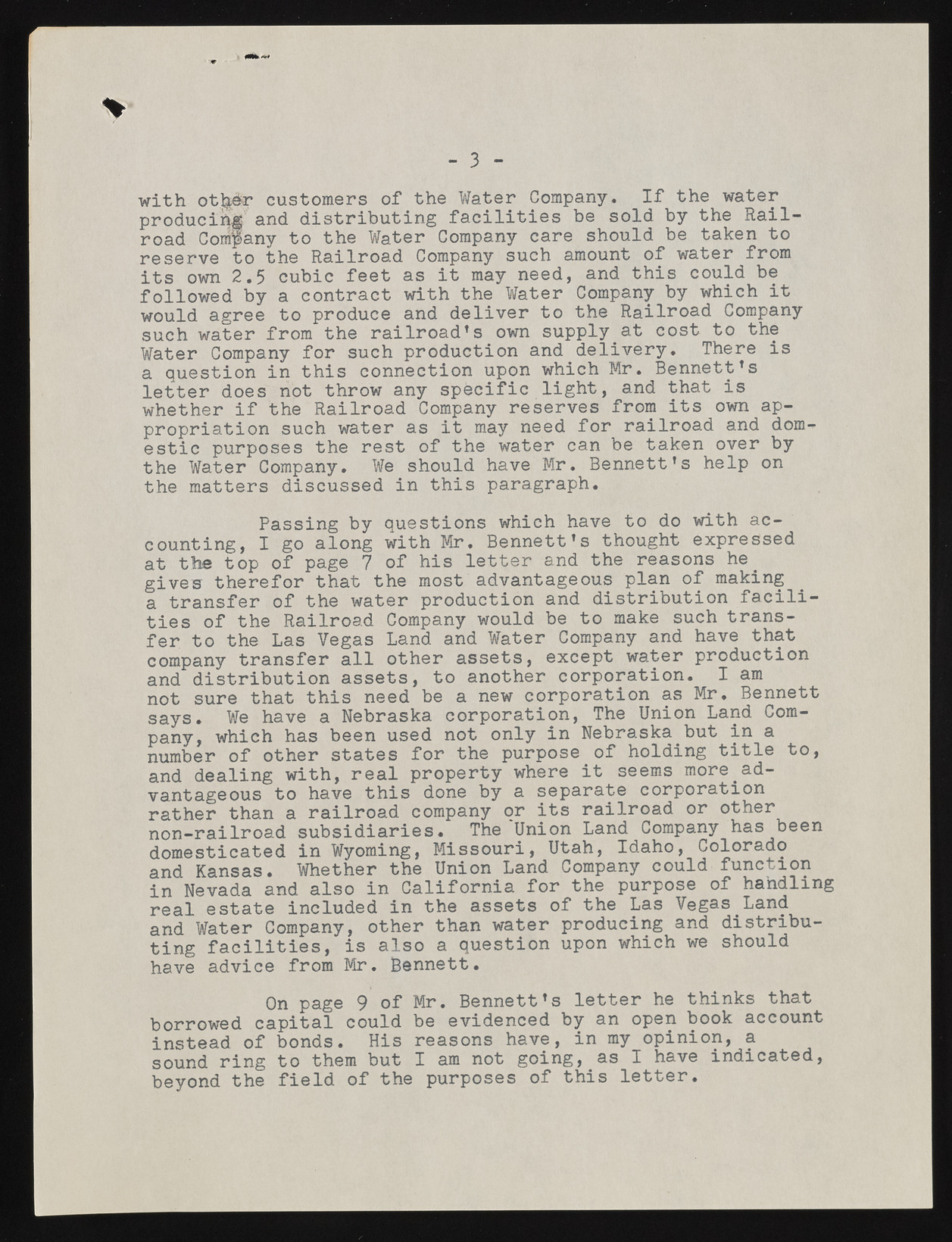Copyright & Fair-use Agreement
UNLV Special Collections provides copies of materials to facilitate private study, scholarship, or research. Material not in the public domain may be used according to fair use of copyrighted materials as defined by copyright law. Please cite us.
Please note that UNLV may not own the copyright to these materials and cannot provide permission to publish or distribute materials when UNLV is not the copyright holder. The user is solely responsible for determining the copyright status of materials and obtaining permission to use material from the copyright holder and for determining whether any permissions relating to any other rights are necessary for the intended use, and for obtaining all required permissions beyond that allowed by fair use.
Read more about our reproduction and use policy.
I agree.Information
Digital ID
Permalink
Details
Member of
More Info
Rights
Digital Provenance
Publisher
Transcription
% - 3 - with ©tbir customers of the Water Company. If the water producing; and distributing facilities be sold by the Railroad Company to the Water Company care should be taken to reserve to the Railroad Company such amount of water from its own 2.5 cubic feet as it may need, and this could be followed by a contract with the Water Company by which it would agree to produce and deliver to the Railroad Company such water from the railroad’s own supply at cost to the Water Company for such production and delivery. There is a question in this connection upon which Mr. Bennett’s letter does not throw any specific light, and that is whether if the Railroad Company reserves from its own appropriation such water as it may need for railroad and domestic purposes the rest of the water can be taken over by the Water Company. We should have Mr. Bennett’s help on the matters discussed in this paragraph. Passing by questions which have to do with accounting, I go along with Mr. Bennett’s thought expressed at the top of page 7 of his letter and the reasons he^ gives therefor that the most advantageous plan of making a transfer of the water production and distribution facilities of the Railroad Company would be to make such transfer to the Las Vegas Land and Water Company and have that company transfer all other assets, except water production and distribution assets, to another corporation. I am not sure that this need be a new corporation as Mr. Bennett says. We have a Nebraska corporation, The Union Land Company, which has been used not only in Nebraska but in a number of other states for the purpose of holding title to, and dealing with, real property where it seems more advantageous to have this done by a separate corporation rather than a railroad company or its railroad or other non-railroad subsidiaries. The Union Land Company has been domesticated in Wyoming, Missouri, Utah, Idaho, Colorado and Kansas. Whether the Union Land Company could function in Nevada and also in California for the purpose of handling real estate included in the assets of the Las Vegas Land and Water Company, other than water producing and distributing facilities, is also a question upon which we should have advice from Mr. Bennett. On page 9 of Mr. Bennett’s letter he thinks that borrowed capital could be evidenced by an open book account instead of bonds. His reasons have, in my opinion, a sound ring to them but I am not going, as I have indicated, beyond the field of the purposes of this letter.

